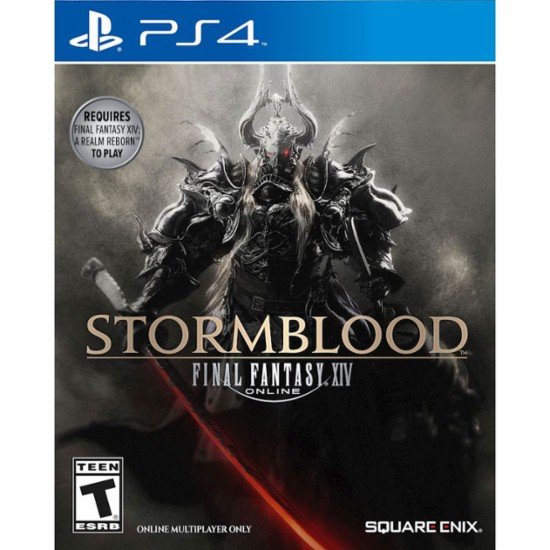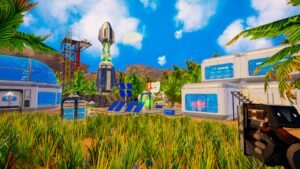“May you ever walk in the light of the crystal.” These words have spurred me onward time and again, toward horizons unknown throughout the myriad realms of Final Fantasy. I’ve grown up with the series—we share a birth year—and it has ever been my boon companion throughout life’s travails. As Terra flew hence from the icy cliffs of Narshe, I laboured to stretch my own juvenile wings. “Ha ha ha ha,” laughed Tidus, in a voice as awkward as mine, a high school boy on a pilgrimage through the mundane. Then came Final Fantasy XI, and I was lost in Vana’diel for seven years. Once I found my compass and said my goodbyes, I thought I’d never return to a virtual world so vast, so demanding. But Final Fantasy XIV shattered that notion.
First with its relaunch as A Realm Reborn, and subsequently with its outstanding first expansion pack, Heavensward, Final Fantasy XIV continues to prove that it deserves its roman numeral. Director Naoki Yoshida bills his wildly successful MMORPG as something of a “Final Fantasy theme park.” His words ring true—the world of Hydaelyn is replete with Moogles and magic, Cactaurs and Chocobos. It’s truly a celebration of all things Final Fantasy, with every player at the forefront of their own journey as the Warrior of Light. The latest expansion, Stormblood, spins a tale of revolution, moving the action across the world into lands players have been aching to explore since the game first launched.
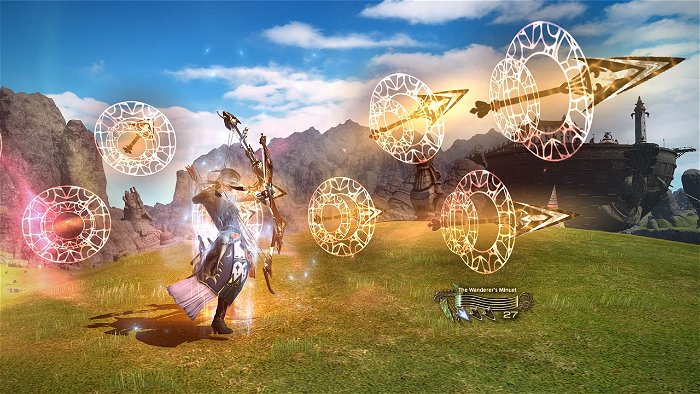
The conflict in Stormblood happens on two fronts: the rocky peaks and lochs of Ala Mhigo, a city-state on the border of Gridania, and Doma, an Eastern land that bears more than a passing resemblance to feudal Japan. Together with Lyse, a puissant pugilist and a displaced Ala Mhigan native, the player sets forth on a quest to liberate these two places from the yoke of the militaristic Garlean Empire. Stormblood once again delivers a stirring narrative far beyond what one might expect from an MMORPG with millions of active players.
Perhaps most impressive is how alive the world feels, how it reacts to the player’s deeds despite there being countless other people undertaking the same tasks. There is a real sense of progression as the story moves forward; cities are broken, lives are lost, and things don’t magically get better until the player has the power to make it better. This is due in large part to Stormblood‘s central antagonist, Zenos yae Galvus. This bloodthirsty tyrant is responsible for all of the suffering wrought upon Ala Mhigo and Doma alike. He is an incredibly effective villain, one that exudes such a menacing aura that he feels like a true threat, and made me ache to see his sneering visage cut down. Stormblood also does much to flesh out the world of Hydaelyn in other directions, like taking the player to the homeland of the Au Ra (a playable race introduced in Heavensward) and delving into Doma’s storied history. It all coalesces in a thrilling finale that wraps up the tale at hand while leaving the door open for subsequent adventures—as an MMORPG is supposed to do.
Stormblood doesn’t just add new quests and locales. It also comes with sweeping revisions to gameplay, including two new playable jobs (Red Mage and Samurai), underwater diving, new abilities for crafters and gatherers, and an overhaul to the combat system. Stats and abilities deemed superfluous have either been consolidated or excised from the game entirely. This is significant because Stormblood raises the level cap from 60 to 70, and the introduction of too many new abilities would have bloated players’ already-brimming hotbars to excess. Also gone are cumbersome cross-class actions, which have been replaced by a group of shared “Role Actions” that vary by job type, like healer or magical DPS. This ensures that each role has access to the same pool of essential abilities, which should alleviate some balancing issues in endgame raiding.
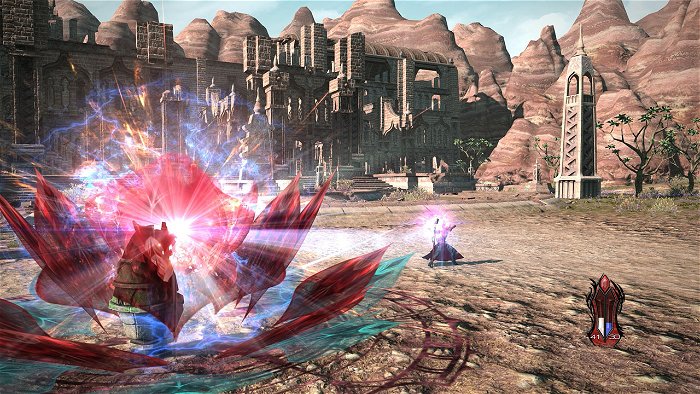
Each job now has its own completely unique UI element to manage (a “Job Gauge,” to wit) adding a heaping helping of flavour to their already standout personalities. The Red Mage, for instance, must balance the accumulation of white and black mana to execute powerful fencing skills, while the Machinist has to manage a heat gauge for its firearms. This is an across-the-board improvement, as far as I’m concerned, even if specific jobs could use some tuning. My main job, Summoner, feels a bit underserved by some of the tweaks to its ability set; I can summon an avatar of the mighty Bahamut, which is awesome, to be frank, but the ability rotation required to execute this leaves little room for error. If I mess up and use Fester without any DoTs on the enemy, I don’t get a charge of Aethertrail Attunement, which means I can’t go into Dreadwyrm Trance and Deathflare, which pushes my invocation back by a full minute until such time as I can pop Aetherflow again. Whoops, maybe that’s too esoteric. But the point stands that some balancing is in order, which my White Mage friends can attest to—don’t say the word “lily” within a yalm of the Final Fantasy XIV subreddit unless you want to invoke their holy wrath.
At present, there isn’t much in the way of endgame content, but that is slated to change soon with the introduction of “Omega – The Bend of Time,” a new eight-person raid series that will have both a standard difficulty and a “Savage” variant. Also, on the docket is a series of alliance raids themed after Ivalice, specifically the version depicted in Final Fantasy Tactics, which is exciting as all get out for a fan like myself. The only challenging content currently available for level 70 players is a pair of Extreme mode battles against Susano and Lakshmi, the new Primals (read: Final Fantasy summons) introduced during the main story. I managed to complete both of these, and they’re a blast. Susano is a samurai-esque fighter that cleaves his arena in twain, forcing players to jump from side to side as they avoid his dangerous lightning attacks—”the electric slide,” indeed. Lakshmi, on the other hand, hides her murderous intent behind a mask of benevolence, and players must shield themselves against her dazzling assault with a magical shield ability called Vril that is unique to her battle.
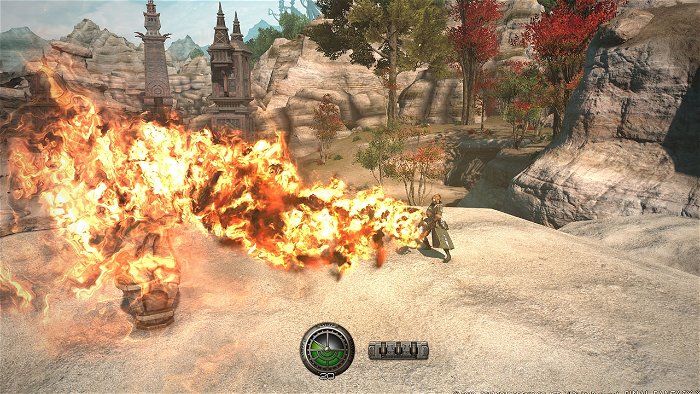
As if to put a cherry on top of Stormblood‘s crimson sundae, composer Masayoshi Soken once again returns with a bevy of stirring melodies that breathe further life into Final Fantasy XIV. These include both bombastic daytime arrangements and subdued nighttime counterparts for most areas. My favourite is “Drowning in the Horizon,” the theme of the Azim Steppe. Its tribal drums and majestic vocals bring to mind the rolling plains of a Tibetan highland, not unlike the Steppe itself. At the end of it all lies “Revolutions,” Stormblood‘s rousing main theme and a call to arms sung by the resplendent Susan Calloway.
Even as a staunch supporter of Final Fantasy XIV, I continue to be impressed by its ability to transcend expectations with every update. Nitpicks in job balance aside, Stormblood is a wildly successful expansion, providing audiovisual spectacle at every turn with a story that rivals those of its offline brethren. There has never been a better time to take up the mantle of the Warrior of Light.
Fight, friends. For liberty, or death.

